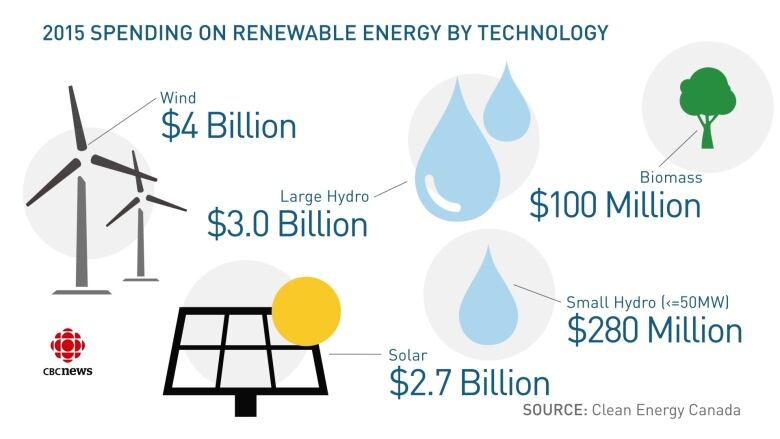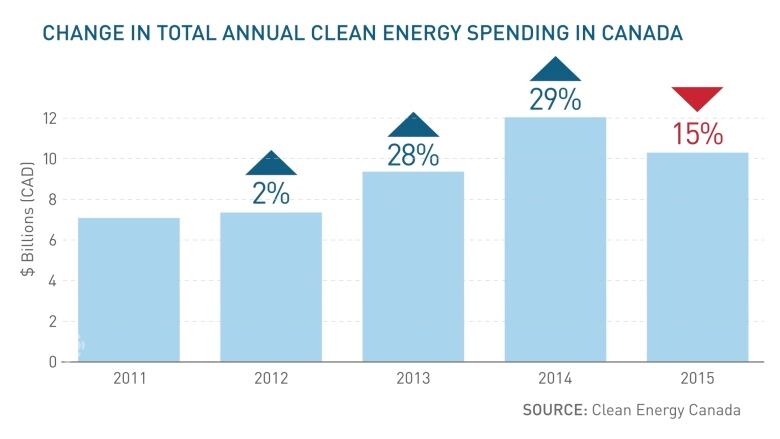Alberta and Saskatchewan to play catch-up on green energy spending
Government policy dictates where money is spent on renewable energy

Alberta and Saskatchewan are renewable energy laggards, while Ontario and Quebec are leaders, according to a new report from Clean Energy Canada.
The organization added up all the clean energy projects constructed in 2015 across the country.
The simple answer is: policy mattersDanWoynillowicz,Clean Energy Canada
About$78 million was spent in Alberta and $60 million in Saskatchewan as a single wind project was constructed in each province.
Meanwhile,investment in Ontario was $5.3 billion,more than half of total clean-energy spending.

Ontario in front
Ontario had set a goal of phasing out coal-fired power plants and boosting renewable energy production.
"Initially they were using something called a feed-in tariff, which did pay a premium for renewable energy. They have now gone to a competitive process where renewable energy developers are competing on a cost basis for contracts," saidWoynillowicz.
- Alberta's carbon tax steers clear of making airlines pay
- Ontario's move away from natural gas would hit Alberta producers
Opportunity on the Prairies
The spending picture will change dramaticallyacross the country as renewable energy targets are set and governments announce ambitious plans to address climate change.
In order to build renewable energy projects the most important thing is to get revenue certainty. Dan Balaban, Greengate Power Corporation
In particular, tens of billions of dollars in public and private money is expected to be invested in Alberta and Saskatchewan between now and 2030. Alberta'sgoal is to rely on renewables for 30 per centof electricity consumption by that year, while Saskatchewanhas a50 per centrenewable energy target.

Those two provinces are expected to experience the largest increase in renewable energy spending in the near future.
"As long as they put in place the right kind of policies for that, then I think we will see investment numbers go up significantly in Alberta and Saskatchewan in the coming years," saidWoynillowicz.
The Alberta government will announce in the fall its renewable energyprogram before it beginsto acceptbids from the private sector by end of the year.
"In order to build renewable energy projects, the most important thing is to get revenue certainty," said Dan Balaban, founder of Calgary-based Greengate Power Corporation, which developed one of the largest wind farms in the country and plans to bid on contracts from the Alberta government.
"This isan optimistic time for the renewable sector and we're anxiously awaiting the details of the government policy," he said.
In the last year, most of the $1.9 billion spent in Quebec went towardwind power, while much of the $1.2 billion invested in Atlantic Canada was focused on Newfoundland and Labrador's Muskrat Falls hydro project.














_(720p).jpg)


 OFFICIAL HD MUSIC VIDEO.jpg)
.jpg)



























































































